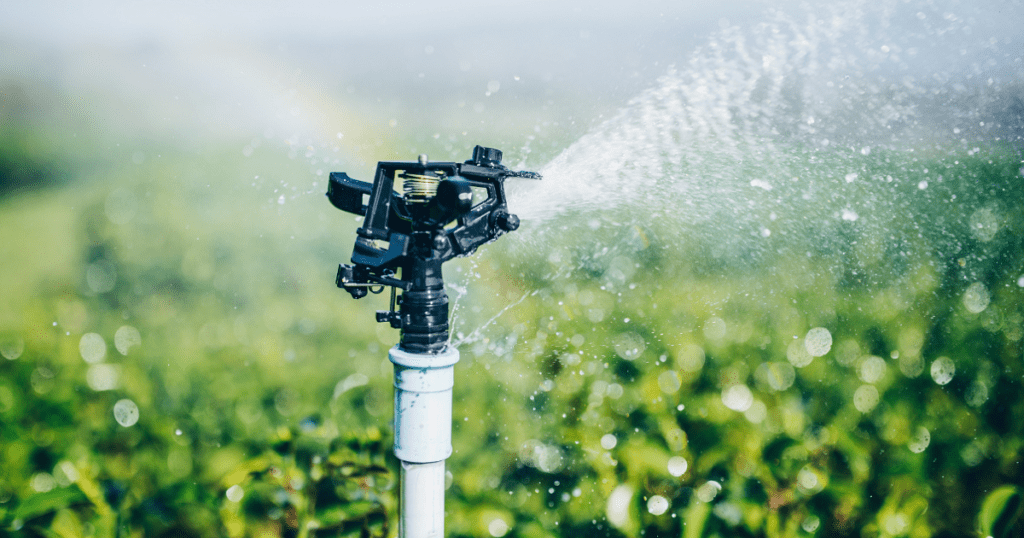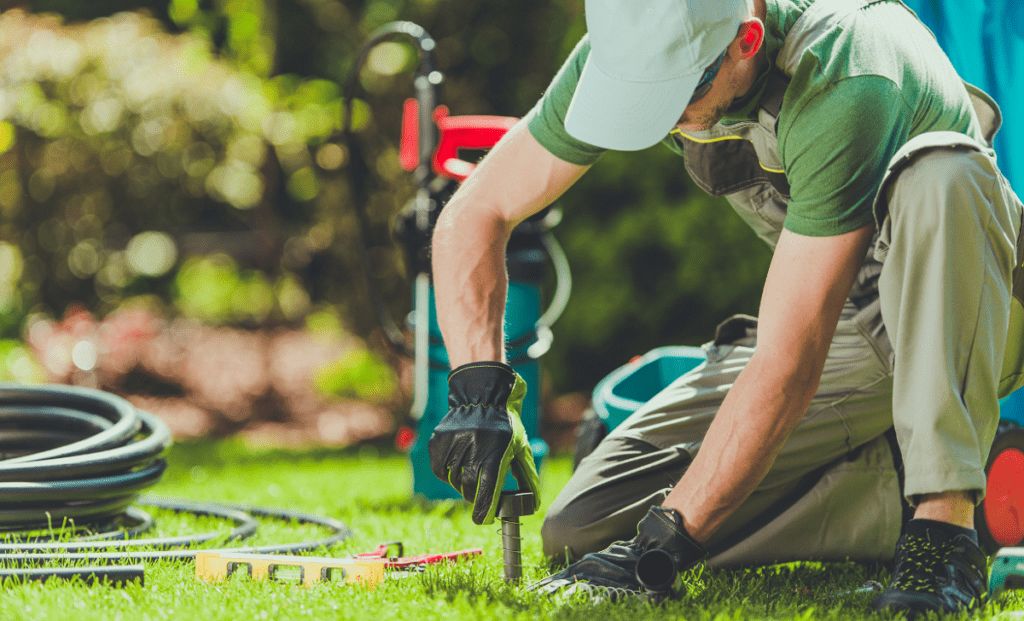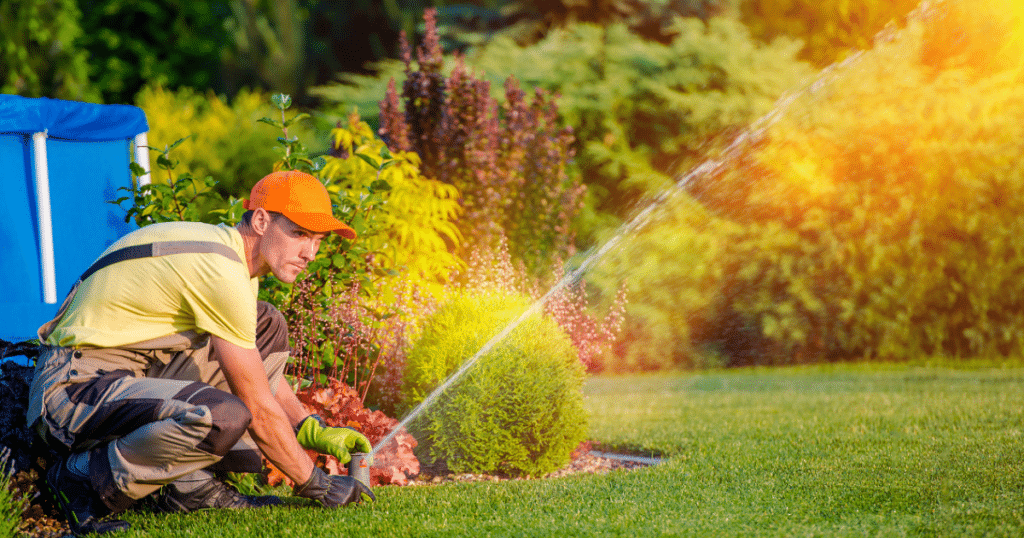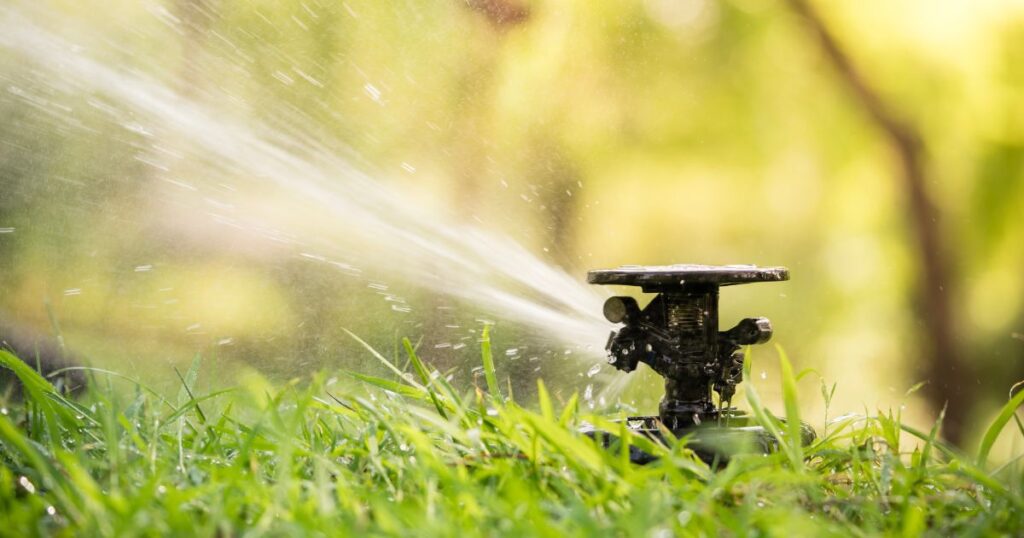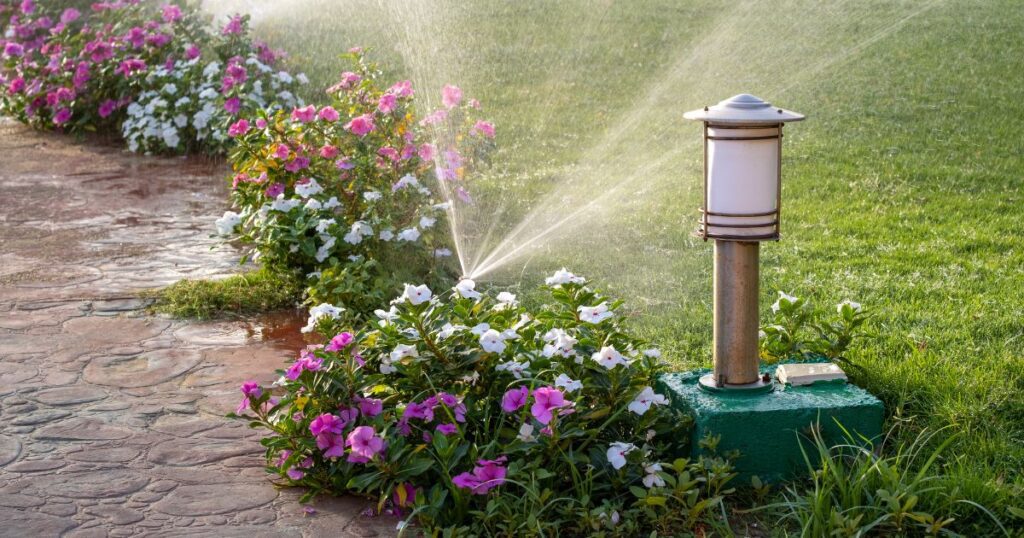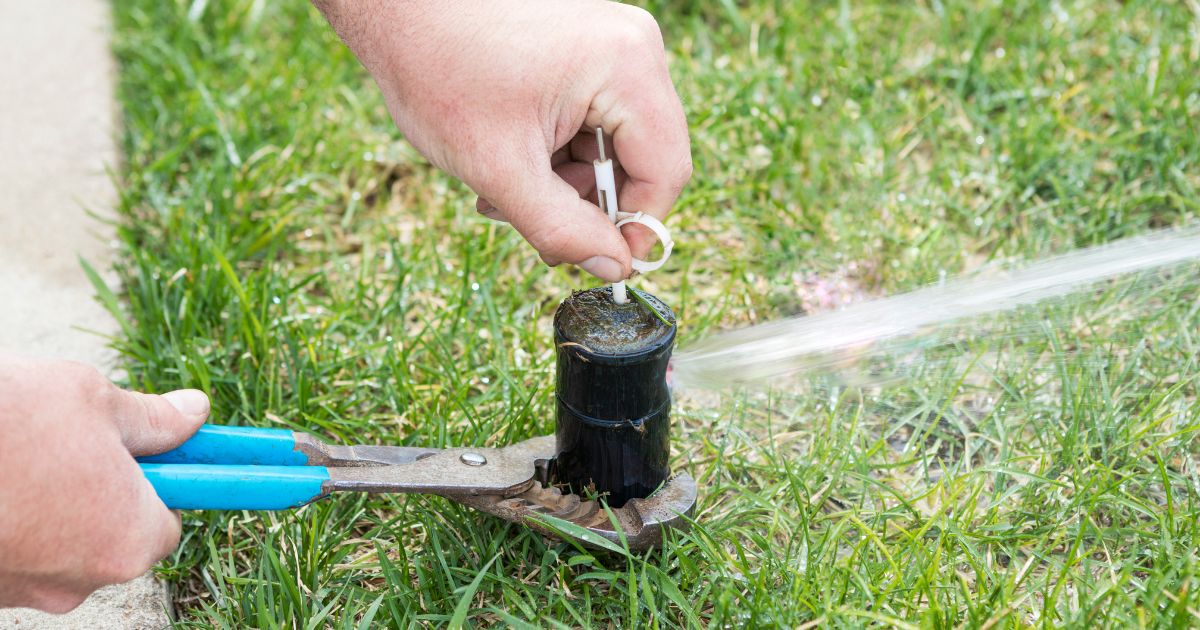
Attention, fellow sprinkler enthusiasts! As winter approaches, it’s time to prepare and shield our beloved sprinkler systems from the icy clutches of Jack Frost. Wondering how to protect sprinkler system from freezing? Look no further! Discover invaluable tips on insulation, drainage maintenance, heating options, and more in this comprehensive guide. Don’t let your sprinklers succumb to freezing troubles or transform into icicles. Join us as we unveil the secrets of winterizing like a pro and ensure your sprinkler system stays cozy and fully operational throughout the chilly season. Get ready to unleash your inner sprinkler superhero and embark on this frost-fighting adventure!
To protect your sprinkler system from freezing, start by turning off the water supply and draining any remaining water from the pipes and sprinkler heads. Insulate exposed pipes with foam insulation sleeves to provide an extra layer of protection. Lastly, consider using a freeze sensor or installing a sprinkler system cover to shield your system from extremely cold temperatures.
Importance of Protecting Sprinkler Systems from Freezing
The primary reason for protecting sprinkler systems from freezing is to prevent damage to the system’s components. When the water inside the pipes freezes, it expands and puts pressure on the walls of the pipe.
This pressure can cause cracks or ruptures in the pipe, leading to leaks once thawed. The resulting damage can be costly to repair or require entire sections of pipes replaced.
Frozen sprinkler systems pose an even greater risk in commercial properties where a single burst pipe could lead to extensive property damage or business interruption. If fire protection sprinklers are compromised by freezing temperatures, then fire safety standards may no longer be met, making it crucial that these systems are protected.
Common Problems Caused by Frozen Sprinkler Systems
One common problem caused by frozen sprinkler systems is reduced functionality due to clogs caused by ice buildup in pipes or valves. The ice blockage restricts water flow through the system resulting in limited coverage when watering plants or grass during springtime. Another issue is decreased efficiency in fire protection systems due to malfunctioning parts caused by cold temperatures that have caused them to contract and freeze, which may hinder their ability to operate properly during an emergency situation
Perhaps more concerning are hazards posed by leaking pipes when thawed, as they pose potential slip-and-fall risks on walkways and pavements for both residential and commercial property owners. In addition to these problems, frozen sprinkler systems can result in a significant amount of water loss due to leaks, leading to increased water bills and environmental wastage.
Understanding Sprinkler Systems
Overview of How Sprinkler Systems Work
Sprinkler systems are designed to distribute water evenly across a designated area. They use a combination of pipes, valves, and sprinkler heads to achieve this goal.
The system is typically connected to a water source, which pumps water through the pipes and into the sprinkler heads. The sprinklers then spray the water onto the surrounding area.
The system is controlled by an irrigation controller or timer, which determines when and how long the system will run. A sensor may also be installed to detect rain or moisture levels in the soil and adjust the system accordingly.
There are two main types of sprinkler systems: above-ground and underground. Above-ground systems have visible pipes and sprinklers that are exposed to weather conditions, while underground systems have buried pipes that are protected from external elements.
Components of a Typical Sprinkler System
A typical sprinkler system consists of several components that work together to distribute water effectively:
1. Water Source – This can be a municipal line or well pump that supplies water to the system.
2. Backflow Preventer – This prevents contaminated water from flowing back into the main water supply.
3. Mainline – This is the primary pipe that carries water from the source to other areas of the system.
4. Zone Valves – These control the flow of water to specific zones within the system.
5. Lateral Lines – These smaller pipes carry water from zone valves to individual sprinklers.
6. Sprinkler Heads – These are attached at regular intervals along lateral lines and spray out a fine mist or stream of water when activated by pressure changes in the lateral lines.
7. Irrigation Controller – This acts as the brains behind all operations controlling timing, duration, frequency, etc.
Understanding these components is important for maintaining your sprinkler system and protecting it from freezing during cold weather conditions.
RELATED: How to Find a Buried Sprinkler Head: A Comprehensive Guide
Causes of Freezing in Sprinkler Systems
Temperature Fluctuations and Extreme Weather Conditions
One of the main causes of freezing in sprinkler systems is temperature fluctuations and extreme weather conditions. In areas where temperatures regularly drop below freezing, sprinkler systems can be particularly vulnerable to damage if not properly maintained.
As temperatures fluctuate, water within the system can expand and contract, causing pipes to crack or burst. Extreme weather conditions such as heavy snowfall or ice storms can also cause problems for sprinkler systems.
Snow and ice buildup around the system can restrict water flow and lead to frozen pipes. Additionally, when temperatures drop rapidly, water within the system may freeze before it has a chance to drain out completely.
Poor Insulation and Inadequate Drainage Systems
Another common cause of frozen sprinkler systems is poor insulation or inadequate drainage systems. If pipes are not properly insulated, they are more susceptible to cold air and temperature fluctuations, which can cause them to freeze over time. Inadequate drainage systems can also contribute to freezing problems in sprinkler systems.
Water left sitting in low points within the system is more likely to freeze than water that has been drained out completely. This is particularly problematic for irrigation lines that are buried underground or have low spots where water can collect.
Improper installation practices can also lead to inadequate drainage systems that make your irrigation system more vulnerable than it should be. For example, installing irrigation lines with too much slope may force water away from the plants instead of towards them while making it hard for you to maintain proper pressure levels.
The Importance of Understanding Causes
Understanding the causes of frozen sprinkler systems is important because it allows you to identify potential problem areas in your own irrigation system beforehand so that you can take preventative measures accordingly. If you live in an area with harsh winter weather, it is crucial that you take steps to protect your sprinkler system before cold weather sets in. Understanding the causes of freezing in sprinkler systems can help you identify potential problem areas and take the necessary steps to prevent damage.
By taking proactive measures such as insulating pipes and properly draining water from the system, you can help ensure that your sprinkler system remains functional throughout the winter months. Regular maintenance checks also go a long way in ensuring that your system remains operational for years to come.
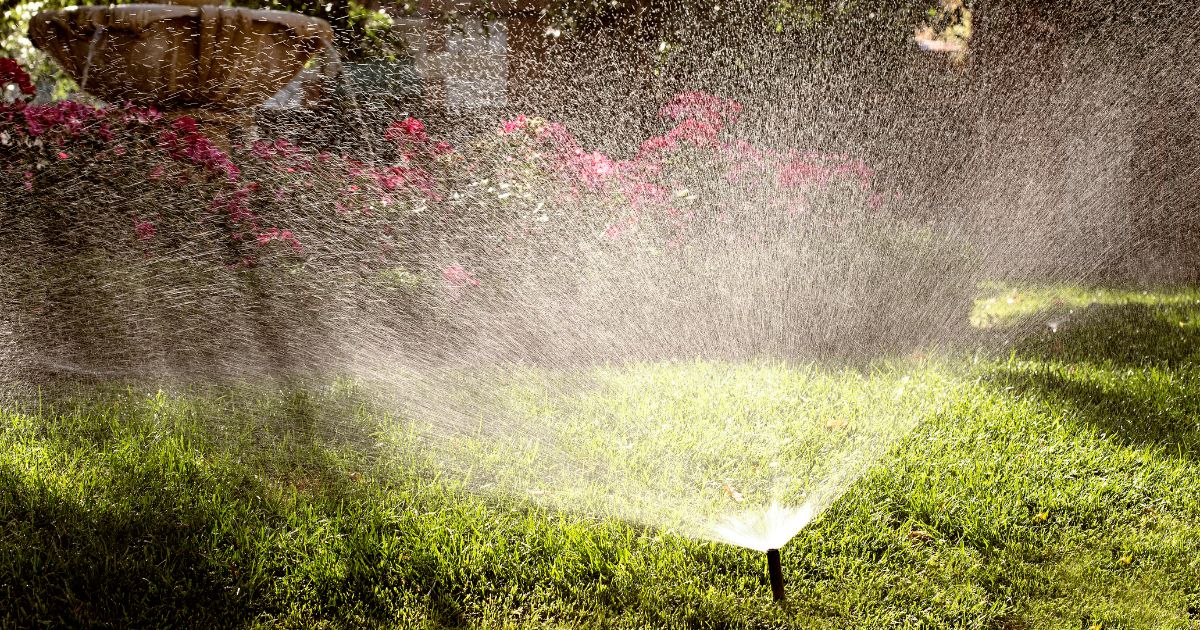
Tips for Protecting Sprinkler Systems from Freezing
Insulation
It is important to insulate sprinkler system components to prevent them from freezing and bursting during the winter months. One common type of insulation is foam insulation, which can easily be applied using a spray can. Other types of insulation include fiberglass and rubber foam pipe insulation.
When choosing an insulation material, it is important to consider its R-value or thermal resistance. The higher the R-value, the more effective the insulation will be at preventing heat loss.
When insulating pipes, valves, and fittings, make sure to cover any exposed areas completely. This includes any areas where pipes run through exterior walls or unheated spaces like garages or attics.
Valves and fittings should also be insulated as they are vulnerable to freezing just like pipes. Another effective method of preventing frozen pipes is wrapping them with heat tape.
Heat tape is an electrical heating device that wraps around pipes and keeps them warm enough to prevent freezing. When installing heat tape, make sure to follow manufacturer instructions carefully in order to avoid damage.
Drainage System Maintenance
Proper drainage system maintenance can also help prevent sprinkler systems from freezing during winter months. Clearing debris like leaves and branches from gutters and downspouts helps ensure that water can flow freely through the system without becoming trapped or blocked. Before winter sets in, it is also a good idea to flush the sprinkler system with air or water in order to remove any excess water that could potentially freeze inside the pipes over winter.
Heating Options
Heating options are another way to protect your sprinkler systems from freezing during cold weather conditions. One effective option is installing a freeze protection valve on your main water supply line, which automatically shuts off water flow when temperatures drop below a certain level.
Another option is using a space heater or heat lamp near the sprinkler system. This will provide enough heat to keep the pipes and components warm and prevent them from freezing.
Monitoring the System Regularly
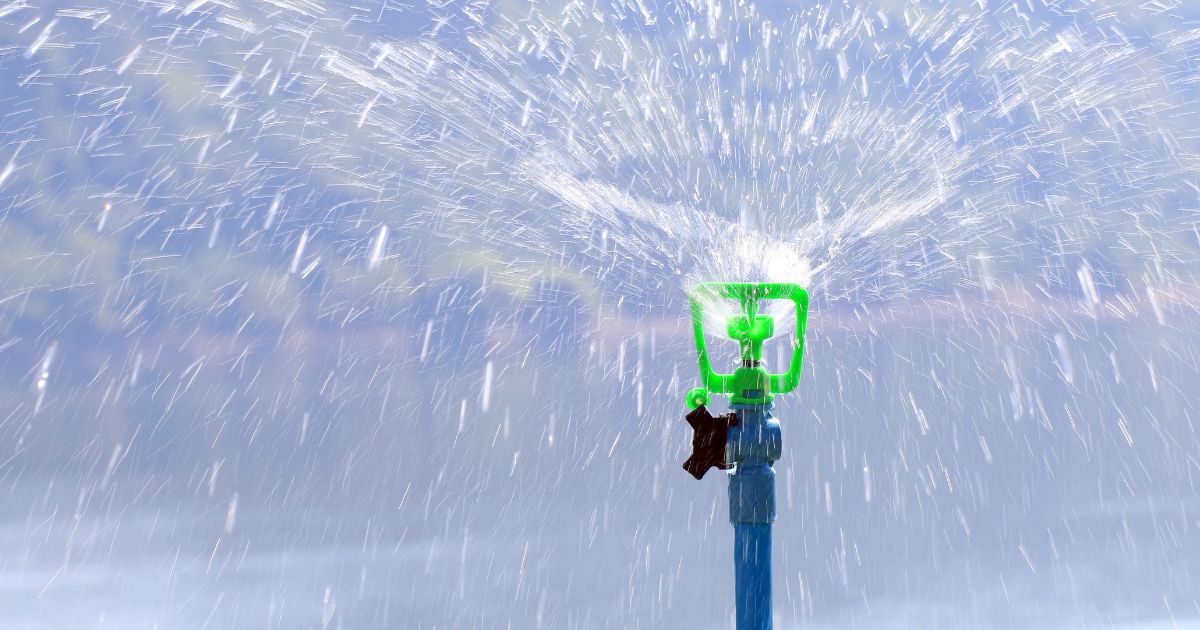
It is important to regularly check for leaks or cracks in your sprinkler system pipes as they can cause water to freeze and expand, leading to burst pipes. Inspecting the system after extreme weather conditions like heavy snowfalls, ice storms, or extended periods of sub-zero temperatures is also recommended.
If you notice any signs of damage like leaks, cracks, or bulging in your pipes, it is important to address them immediately before they worsen and cause further damage. Regular maintenance checks will help ensure that your sprinkler system operates safely and efficiently all year-round.
Protecting your sprinkler system from freezing during winter months requires a combination of insulation, drainage maintenance, heating options, and monitoring. By taking these precautions seriously and conducting regular checks on your system’s components, you can avoid costly repairs due to burst pipes caused by freezing weather conditions.
Frequently Asked Questions
What is frost protection for sprinklers?
Frost protection for sprinklers involves implementing measures to prevent freezing and damage to the sprinkler system components. This can include using insulation covers, heat tapes, or draining the system before freezing temperatures to prevent water from remaining inside and causing damage.
How do you insulate a sprinkler system?
To insulate a sprinkler system, you can wrap the exposed pipes with insulation sleeves or foam tape. This helps to retain heat and protect the pipes from freezing during cold temperatures.
Should I turn off my sprinklers during a freeze?
It is advisable to turn off your sprinklers during a freeze to prevent water in the system from freezing and potentially damaging the sprinkler components. Freezing water can cause pipes to burst and result in costly repairs.
What is the best prevention for frost?
The best prevention for frost includes insulating vulnerable areas, such as pipes and valves, using appropriate materials, as well as providing heat sources like heat tapes or heaters in areas prone to freezing.
How do I protect my sprinklers?
To protect your sprinklers from frost, ensure that all exposed pipes and components are properly insulated, especially in areas prone to freezing temperatures. You can also consider using freeze-resistant sprinkler heads that are designed to withstand low temperatures without damage.
What happens when sprinklers freeze?
When sprinklers freeze, the water inside the system can expand, causing pipes to crack or burst. This can result in leaks, loss of water pressure, and damage to the sprinkler system. It is important to take preventive measures to avoid freezing and protect the system from potential damage.
RELATED: How to Find Broken Sprinkler Pipe Underground
Conclusion
Recap of Tips to Protect Sprinkler Systems from Freezing
Protecting your sprinkler system from freezing is vital to ensure its longevity and optimal performance. By following the tips mentioned above, you can prevent costly repairs down the line and keep your system functioning efficiently throughout the winter.
Insulation is one of the most effective ways to protect your sprinkler system from freezing temperatures. By insulating pipes, valves, fittings, and other components with appropriate materials, you can retain heat and prevent water from freezing inside the system.
Clearing debris from gutters and downspouts is critical before winter sets in. Ensure that your drainage systems are free-flowing so that water does not pool or accumulate around critical components such as valves or backflow preventers.
Heating options such as freeze protection valves or space heaters can provide additional protection against extremely cold temperatures. However, these methods should be used judiciously with frequent monitoring to ensure safety.
Monitoring your sprinkler system regularly for leaks or cracks in pipes will help detect any issues early on. This inspection would also help identify any damage caused by extreme weather conditions such as wind storms or heavy snowfall
Importance of Regular Maintenance to Prevent Costly Repairs
Regular maintenance of a sprinkler system is key to avoiding expensive repairs due to damage caused by freezing temperatures or other factors. By performing periodic checks for leaks or damage, you can catch problems early before they become more significant issues requiring extensive repair work. Maintenance tasks include checking the timing system; ensuring that heads are adjusted correctly; checking for clogged heads; replacing worn-out parts; flushing out debris; testing for proper pressure levels; and inspecting backflow devices for proper operation.
By staying on top of regular maintenance tasks throughout the year, you’ll be able to identify any issues affecting your sprinkler systems’ health before they become major problems. This proactive approach can help you avoid costly repairs or replacements down the line.
Protecting your sprinkler system from freezing is an essential part of keeping it functioning optimally throughout the winter months. By following the tips outlined above, homeowners can prevent costly repairs and ensure their system lasts for years to come.
Regular maintenance is also crucial for identifying and fixing any problems before they become significant issues requiring extensive repair work. Don’t wait until something goes wrong with your sprinkler system – take steps today to protect it from freezing temperatures and keep it operating efficiently all year round!

